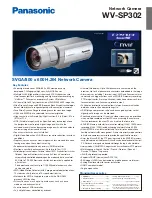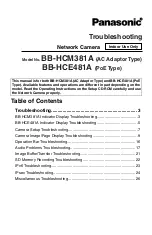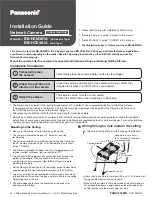
Chapter 19
Troubleshooting
RUGGEDCOM ROX II
CLI User Guide
752
VLANs
Problem
Solution
Is it possible that the port has migrated to STP? If the port is connected to the LAN segment
by shared media and STP bridges are connected to that media, then convergence after link
failure will be slow.
Delays on the order of tens or hundreds of milliseconds can result in circumstances where
the link broken is the sole link to the root bridge and the secondary root bridge is poorly
chosen. The worst of all possible designs occurs when the secondary root bridge is located
at the farthest edge of the network from the root. In this case, a configuration message will
have to propagate out to the edge and then back in order to reestablish the topology.
The network is composed of a ring of
bridges, of which two (connected to
each other) are managed and the rest are
unmanaged. Why does the RSTP protocol
work quickly when a link is broken between
the managed bridges, but not in the
unmanaged bridge part of the ring?
A properly operating unmanaged bridge is transparent to STP configuration messages. The
managed bridges will exchange configuration messages through the unmanaged bridge
part of the ring as if it is non-existent. When a link in the unmanaged part of the ring fails
however, the managed bridges will only be able to detect the failure through timing out of
hello messages. Full connectivity will require three hello times plus two forwarding times to
be restored.
The network becomes unstable when a
specific application is started. The network
returns to normal when the application is
stopped.
RSTP sends its configuration messages using the highest possible priority level. If CoS is
configured to allow traffic flows at the highest priority level and these traffic flows burst
continuously to 100% of the line bandwidth, STP may be disrupted. It is therefore advised
not to use the highest CoS.
When a new port is brought up, the root
moves on to that port instead of the port it
should move to or stay on.
Is it possible that the port cost is incorrectly programmed or that auto-negotiation derives an
undesired value? Inspect the port and path costs with each port active as root.
An IED/controller does not work with the
device.
Certain low CPU bandwidth controllers have been found to behave less than perfectly when
they receive unexpected traffic. Try disabling STP for the port.
If the controller fails around the time of a link outage, there is the remote possibility that
frame disordering or duplication may be the cause of the problem. Try setting the root port
of the failing controller’s bridge to STP.
Polls to other devices are occasionally lost.
Review the network statistics to determine whether the root bridge is receiving TCNs around
the time of observed frame loss. It may be possible there are problems with intermittent
links in the network.
The root is receiving a number of TCNs.
Where are they coming from?
Examine the RSTP port statistics to determine the port from which the TCNs are arriving.
Sign-on to the switch at the other end of the link attached to that port. Repeat this step until
the switch generating the TCNs is found (i.e. the switch that is itself not receiving a large
number of TCNs). Determine the problem at that switch.
Section 19.5
VLANs
The following describes common problems related to the VLANs.
Problem
Solution
VLANs are not needed on the network. Can
they be turned off?
Yes. Simply leave all ports set to type
edge
and leave the native VLAN set to 1. This is the
default configuration for the switch.
Two VLANs were created and a number of
ports were made members of them. Now
some of the devices in one VLAN need to
send messages to devices in the other VLAN.
If the devices need to communicate at the physical address layer, they must be members of
the same VLAN. If they can communicate in a Layer 3 fashion (i.e. using a protocol such as IP
or IPX), use a router. The router will treat each VLAN as a separate interface, which will have
its own associated IP address space.
Содержание RUGGEDCOM ROX II
Страница 2: ...RUGGEDCOM ROX II CLI User Guide ii ...
Страница 4: ...RUGGEDCOM ROX II CLI User Guide iv ...
Страница 39: ...RUGGEDCOM ROX II CLI User Guide Table of Contents xxxix 19 5 VLANs 752 ...
Страница 40: ...Table of Contents RUGGEDCOM ROX II CLI User Guide xl ...
Страница 46: ...Preface RUGGEDCOM ROX II CLI User Guide xlvi Customer Support ...
Страница 96: ...Chapter 2 Using RUGGEDCOM ROX II RUGGEDCOM ROX II CLI User Guide 50 Accessing Maintenance Mode ...
Страница 170: ...Chapter 5 System Administration RUGGEDCOM ROX II CLI User Guide 124 Deleting a Scheduled Job ...
Страница 256: ...Chapter 6 Security RUGGEDCOM ROX II CLI User Guide 210 Enabling Disabling a Firewall ...
Страница 402: ...Chapter 11 Wireless RUGGEDCOM ROX II CLI User Guide 356 Managing Cellular Modem Profiles ...
Страница 646: ...Chapter 13 Unicast and Multicast Routing RUGGEDCOM ROX II CLI User Guide 600 Deleting a Multicast Group Prefix ...
Страница 732: ...Chapter 15 Network Discovery and Management RUGGEDCOM ROX II CLI User Guide 686 Viewing NETCONF Statistics ...
Страница 790: ...Chapter 17 Time Services RUGGEDCOM ROX II CLI User Guide 744 Deleting a Broadcast Multicast Address ...

































